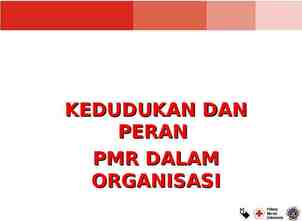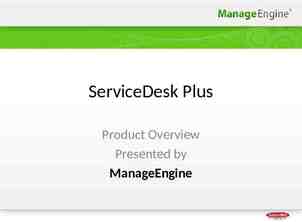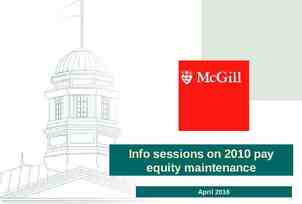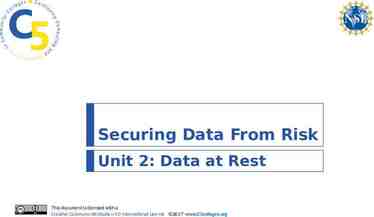1. What are Crown entities and where do they fit in a picture of the
19 Slides763.23 KB
1. What are Crown entities and where do they fit in a picture of the public sector?
How are statutory Crown entity boards different from commercial or NGO boards? (1) Ministerial influence The responsible Minister (the sole shareholder) is answerable in Parliament for the agency’s performance, and is likely to expect a higher level of interaction with the board than shareholders would with a commercial board. Role, function, strategy and priorities A Crown entity’s role and functions are generally set out in legislation, and boards have little or no discretion. Legislation may also prescribe how they operate. The Minister and Cabinet are likely to define the entity’s strategy and policy context. The Minister may set high level delivery priorities for a Crown entity that in a commercial company or NGO would be set by the board. Monitoring and transparency The Minister appoints a monitor to provide them with independent advice on the Crown entity’s strategic alignment, performance, capability and management of risk. The monitor’s role is set out in the CEA (s.27A) includes the power to seek information from the board. This role goes beyond interactions a commercial board may typically have with a shareholder representative.
How are statutory Crown entity boards different from commercial or NGO boards? (2) Funding and financing Crown entity boards have little discretion in raising capital. Funding can generally only be secured though a Budget bid process. Access to borrowing is also tightly controlled, whether borrowing from the Crown or commercially. Crown entities that charge fees, and/or levies for services also have little or no discretion in adjusting prices. These can generally only change by approval from Parliament, Executive Council or Ministers following a funding review which in turn involves public consultation. Public scrutiny and accountability Crown entities experience a high level of public scrutiny and accountability. A Crown entity board is directly accountable to Parliament (CEA Part 4), as well as to the Responsible Minister (CEA S.26), and the Chair may be summoned to answer select committee questions on conduct and performance. The Official Information Act and Public Records Act apply. More generally, Crown entities are often much more in the public eye than a commercial or non-government organisation, often with strong media interest.
How are statutory Crown entity boards different from commercial or NGO boards? (3) Government standards, processes and operating expectations The Crown Entities Act sets out specific requirements of boards and directors on issues such as conduct and integrity that go beyond those required of commercial or NGO boards. Ministers expect entities to embody the Government’s good-faith and collaborative approach to Māori-Crown relations not generally applicable to commercial organisations and NGOs. The Crown Entities Act gives the Public Service Commissioner a statutory role in relation to Crown entities. For example, boards must obtain the written consent of the Public Service Commissioner before formalising their chief executive’s employment terms and conditions. There are other all-of-government requirements on boards, such as the Government Workforce Policy Statement. Measures of success As part of government, Crown entities are expected to deliver and measure success against a wide set of economic, social, environmental and cultural outcomes, set out in the Living Standards Framework. In addition, they are often expected to work across organisational boundaries. This is a more complex operating environment than is faced by most commercial and NGO boards.
What are Crown entities and where do they fit into the public sector? The basic elements of New Zealand’s system of Government Constitutional Monarchy (represented by Gov-General) Legislative Branch Parliament Executive Branch Government Judicial Branch Courts, Tribunals Makes law Develops and administers law Interprets and applies law
New Zealand’s system of Government includes Executive Council The highest formal instrument of government, constituted by the Sovereign’s Letters Patent The institution through which the government collectively and formally advises the GovernorGeneral Comprises all Ministers of the Crown who derive their power to advise the Sovereign and Governor-General from membership of the Executive Council Cabinet Established by convention, with no constitutional basis. Powers are held by individual Ministers in their own right An important forum for Ministers to work together to determine Government policy and processes – the ‘workhorse’ of government Has a strongly enforced convention of collective responsibility Supported by Cabinet Committees, eg the Appointments and Honours Committee (APH) Caucus Each party in Parliament has a caucus comprising all its MPs Can be very influential, eg when the governing party has to depend on the vote of every MP within its sphere of influence Government caucus are often consulted on for board appointments
Schematic of the wider public service and where Crown entities fit
Crown entities are a critical part of the public sector and a ‘unified’ public service They constitute a wide variety of public sector organisations delivering many public services They are often the ‘face of government’ delivering: almost all public health, education, transport and housing services key regulatory functions. Crown entities are collectively responsible for: more than a third of total government expenditure the management of approximately 2/3 of the Crown's physical assets over half the workforce employed in the public sector.
On one hand, they are ‘stand-alone’, but on the other: Government-owned, Crown entities are separate from the Crown - legal entities in their own right Because of their functions and the nature of their work they are designed to operate at appropriate 'arms length’ from Ministers because, for example: decisions on individual cases should not be influenced by Ministers Ministers should be distanced from operations entities require access to a broad range of skills board appointments enable government to harness skills from the private and non-profit sectors. However, Ministers are still answerable to Parliament for entities’ performance
The legislative framework for Crown entities The Crown Entities Act 2004 Provides a consistent framework for the establishment, governance and operation of Crown entities. Clarifies accountability relationships between Crown entities, boards, responsible Ministers and Parliament. Clarifies powers and duties of board members. The entity’s own Act - can supplement, negate or modify any provisions of the Crown Entities Act Other legislation, e.g.: Public Service Act 2020 Public Finance Act 1989 Companies Act 1993 Official Information Act 1982 Ombudsmen Act 1975 Public Audit Act 2001 Various Acts relating to employment and human rights
Te Tiriti o Waitangi / Treaty of Waitangi Negotiated between the Crown and Māori. The Crown does not include Crown entities - but Ministers expect Crown entities to embody the Government’s good-faith and collaborative approach to Māori Crown relationships. This is set out in the Enduring Letter of Expectations. A number of government agencies have guidance about applying the Treaty (and more commonly, its principles) in the course of their work. The New Zealand Productivity Commission reviewed 10 examples in 2014. More information can be found on the Commission’s report ‘ Regulatory institutions and practice [The Treaty of Waitangi in regulatory design and practice]. The Māori Crown relationship continues post-settlement, and past conduct (even if settled) may inform what a reasonable and honourable Treaty partner will do in the future For more information: Te Tiriti o Waitangi / Treaty of Waitangi Guidance [CO (19) 5] Te Arawhiti / Office for Māori Crown Relations Public Sector Capability Framework
Three types of statutory Crown entities Crown agents autonomous Crown entities (ACEs) independent Crown entities (ICEs) The differences between the types include the degree of separation from the Minister, reflected in provisions for board member appointments and removals, and ministerial powers of direction. In addition to statutory entities, there are four other categories of Crown entity: Crown entity companies, Crown entity subsidiaries, School Boards of Trustees, and Tertiary Education Institutions. The new Māori Health Authority is an independent statutory entity with some provisions of the Crown Entities Act in its establishment legislation
What are the differences between these entities?
Each Crown entity has a responsible Minister who oversees and manages the Crown's interests in and relationships with the entities that are within their portfolio represents the public interest in the entity (and, in private sector terms, is the de facto ‘shareholder’) ensures an effective board is in place to govern the entity influences the entity’s strategic direction monitors and reviews Crown entity performance and results carries out any statutory responsibilities . Note: The Ministers of Finance and for the Public Service also have important roles to play in the Crown entity sector, including issuing directions to support a whole of government approach.
Ministers expect boards to: be aware of demands on Ministers from Parliament, taxpayers and other interested parties accept that the Crown has interests wider than those of ordinary shareholders in private companies understand (and embrace) wider Government policy issues as part of their decision- making provide assurance of effective organisational performance (delivery of results) and conformance with statutory functions, powers, duties, etc be aware of and keep Ministers informed about the potential implications of organisation-specific issues on the Crown ensure their Crown entity behaves prudently and sensitively, and in keeping with public sector values.
The ‘no surprises’ principle Boards have authority, but Ministers are ultimately answerable for the actions of their Crown entities to Parliament and the public. Ministers expect to be informed as fully and as early as possible of any entity issues that may impinge on the Government’s responsibilities, or be potentially contentious. Proactivity and timeliness in applying the ethos of 'no surprises' is essential to the integrity of the relationship, and to mutual trust and confidence. A 'no surprises' way of working is not intended to interfere with entities' statutorily independent functions, nor with boards' operational responsibilities. Note: Crown entities should apply the same ‘no surprises’ principles to their relationships with monitoring departments.
Monitoring departments support responsible Ministers Monitoring departments have a statutory role to assist the responsible Minister to carry out his or her role in relation to each monitored entity (no matter how they are funded). This includes supporting Ministers in the process of identifying skill needs and appointing board members, and providing the Minister with information, analysis and advice on the entity’s effectiveness and efficiency . The monitoring department is expected to focus on major opportunities and risks. The Board is the first and primary monitor of performance.
Crown agents are part of the Public Service for some purposes Under the Public Service Act, Crown agents are now bound by the same purpose, principles and values as public service departments and other public service agencies. Boards of Crown agents are responsible for ensuring that the entities they govern uphold the public service principles These provisions are about strengthening the shared identity and underlying behavioural foundations of all public servants – regardless of where they work. It’s aimed at bringing them closer together, in the goal of serving New Zealanders, without fundamentally changing the governance of individual agencies. All Crown entity boards should consider these aims for the entities they govern.
Public Service Act and reforms continued For an overview of the Public Service Act: Purpose, Principles, Values, Māori Crown Relationships and Spirit of Service see https://www.publicservice.govt.nz/assets/SSC-Site-Assets/SAPG/Public-Service-Reform/Purpose-Principles-Values-12 80x1024.pdf For an overview of the Public Service Act and linkages to public sector reforms see https://www.publicservice.govt.nz/assets/SSC-Site-Assets/SAPG/Public-Service-Reform/Overview-of-Public-Service-A ct-2020.pdf







